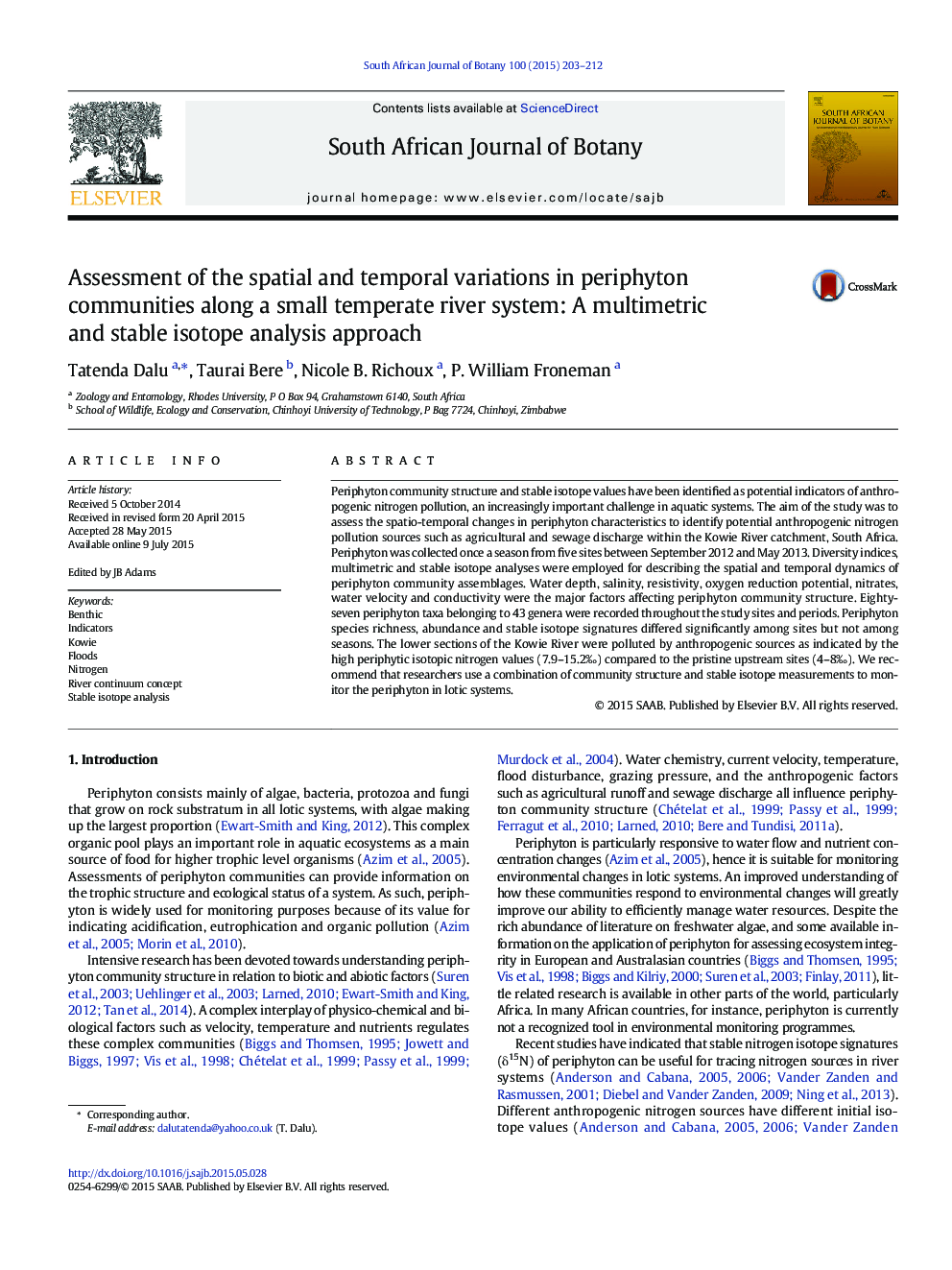| Article ID | Journal | Published Year | Pages | File Type |
|---|---|---|---|---|
| 4520392 | South African Journal of Botany | 2015 | 10 Pages |
•Periphyton plays an important part in ecosystems and is used for monitoring purposes.•High nitrate and ammonium concentrations are recorded mid- and downstream.•Periphyton richness, abundances and stable isotopes differed among sites.•High periphytic δ15N values downstream compared to the pristine upstream sites•Record discharge affected periphyton community structure.
Periphyton community structure and stable isotope values have been identified as potential indicators of anthropogenic nitrogen pollution, an increasingly important challenge in aquatic systems. The aim of the study was to assess the spatio-temporal changes in periphyton characteristics to identify potential anthropogenic nitrogen pollution sources such as agricultural and sewage discharge within the Kowie River catchment, South Africa. Periphyton was collected once a season from five sites between September 2012 and May 2013. Diversity indices, multimetric and stable isotope analyses were employed for describing the spatial and temporal dynamics of periphyton community assemblages. Water depth, salinity, resistivity, oxygen reduction potential, nitrates, water velocity and conductivity were the major factors affecting periphyton community structure. Eighty-seven periphyton taxa belonging to 43 genera were recorded throughout the study sites and periods. Periphyton species richness, abundance and stable isotope signatures differed significantly among sites but not among seasons. The lower sections of the Kowie River were polluted by anthropogenic sources as indicated by the high periphytic isotopic nitrogen values (7.9–15.2‰) compared to the pristine upstream sites (4–8‰). We recommend that researchers use a combination of community structure and stable isotope measurements to monitor the periphyton in lotic systems.
